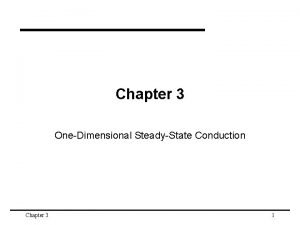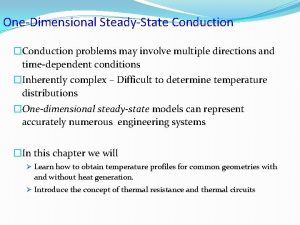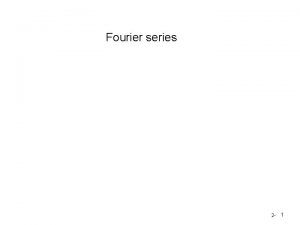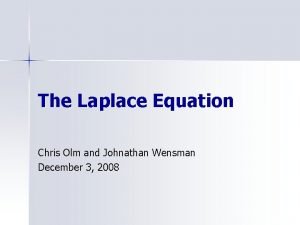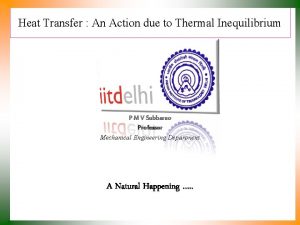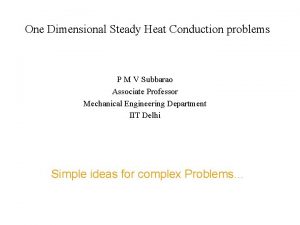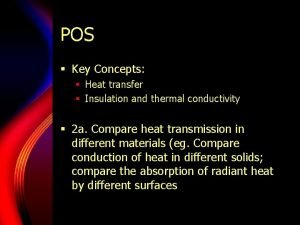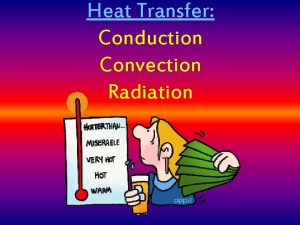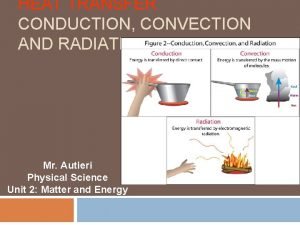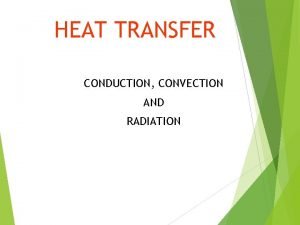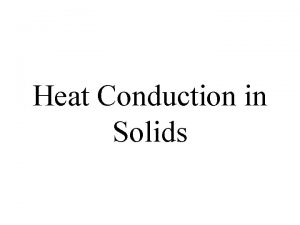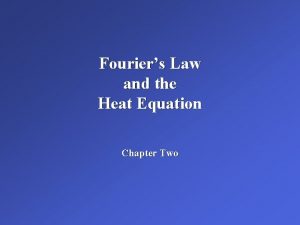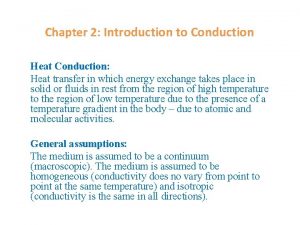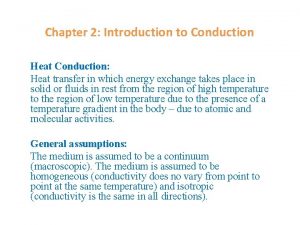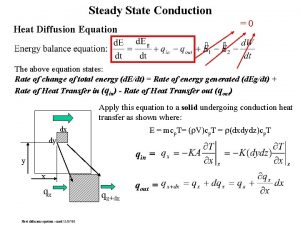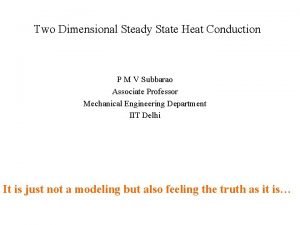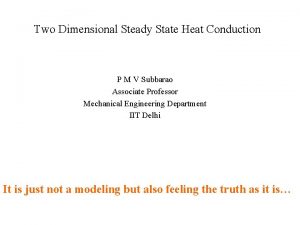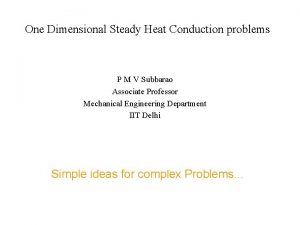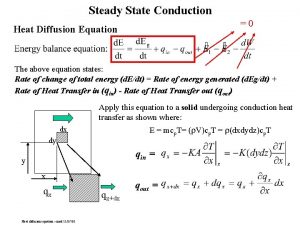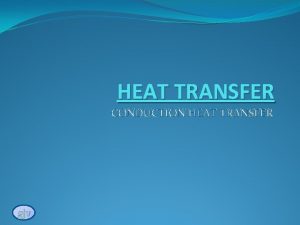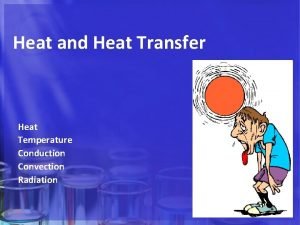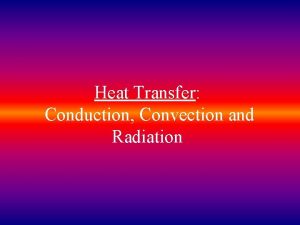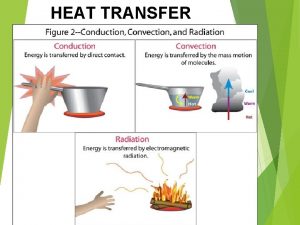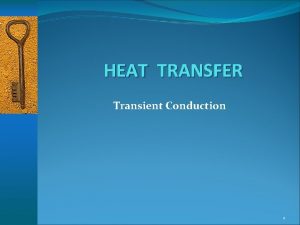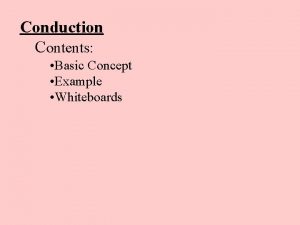Heat conduction Fouriers law of heat conduction Steady




















- Slides: 20

Heat conduction Fourier's law of heat conduction

• Steady state heat conduction • Steady state means that temperature in an object may vary by location but it does not change with time.

Fourier's law describes the rate of heat conduction in a solid Boundary Conditions • x = x 1, T = T 1 • x = x 2 , T = T 2 • Separating the variables, • Integrating from x 1 to x (some interior location within the slab)

Where L= thickness of the slab Thermal Resistance concept: • In the flow of electricity, the electrical resistance is determined from the ratio of electric potential divided by the electric current. Similarly, we may consider heat resistance as a ratio of the driving potential (temperature difference) divided by the rate of heat transfer. • Thus,

HEAT CONDUCTION IN MULTILAYERED SYSTEMS COMPOSITE RECTANGULAR WALL (IN SERIES) In a single layer, the rate of heat transfer is:

• Using the Resistance Concept:

Conduction in cylindrical objects Boundary Conditions T =Ti at r = ri T=To at r = r 0

Separating variables: Integrating :

OVERALL HEAT TRANSFER COEFFICIENT Heat transfer to the internal wall Heat transfer through the wall Where Alm

• Outside the wall • By summing the three equation 1, 2, and 3 the result is : •

CRITICAL THICKNESS FOR INSULATION

COMPOSITE CYLINDRICAL TUBE for a single-layer pipe: and resistance due to conduction Thermal resistance diagram:

Heat Conduction in a Spherical Shell Fourier's Law in radial coordinates Substituting the area of a sphere Integrating, between r = r 1 and r 2, and T 1 and T 2

The thermal resistance is expressed as

Conduction with internal heat generation • In some cases it energy may be produced in an identical shape inside the system like electrical heaters or in respiration in fresh food products such as fruits and vegetables.

Rate of heat in + rate of heat generation = rate of heat out + rate of heat accumulation By taking the limit And for a pure conductive material

Note that if the heat generation zero then : By integration Then we get

• At x=-L, T=Tw • And at x=L, T=Tw • And by solving 1 and 2 At x=0, To=center temperature:

Total heat at both sides =total heat generated at steady state case.

Home work #2 Temperature change with change of distance from the center of generation Draw the relationship between temperature and distance x from the center of the wall knowing that: Ta q' L H k 25 5 1 10 2 °C w/m 3 m w/m 2. °k w/m. °k Home work should be submitted after 6 days from the lecture.
 Fouriers law
Fouriers law One dimensional steady state heat conduction
One dimensional steady state heat conduction Steady state heat conduction
Steady state heat conduction Fouriers trick
Fouriers trick Fouriers trick
Fouriers trick Tcola
Tcola Steady state heat
Steady state heat First law applied to flow process
First law applied to flow process Newton's first law and second law and third law
Newton's first law and second law and third law Newton's first law of motion
Newton's first law of motion V=k/p
V=k/p Avogadro's law constants
Avogadro's law constants Radial and linear heat conduction
Radial and linear heat conduction Heat transfer by conduction gizmo
Heat transfer by conduction gizmo Radial heat conduction
Radial heat conduction Example of conduction heat transfer
Example of conduction heat transfer What is heat transfer conduction convection and radiation
What is heat transfer conduction convection and radiation How heat travels grade 4
How heat travels grade 4 Examples of conduction convection radiation
Examples of conduction convection radiation Heat loss in babies
Heat loss in babies โจทย์ heat transfer พร้อมเฉลย
โจทย์ heat transfer พร้อมเฉลย

